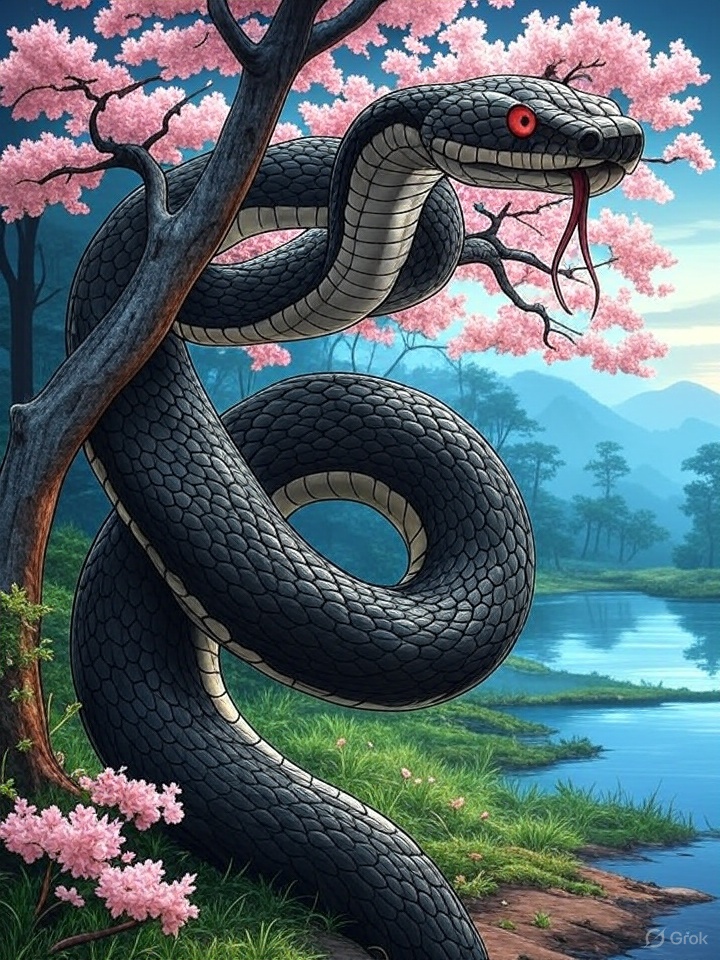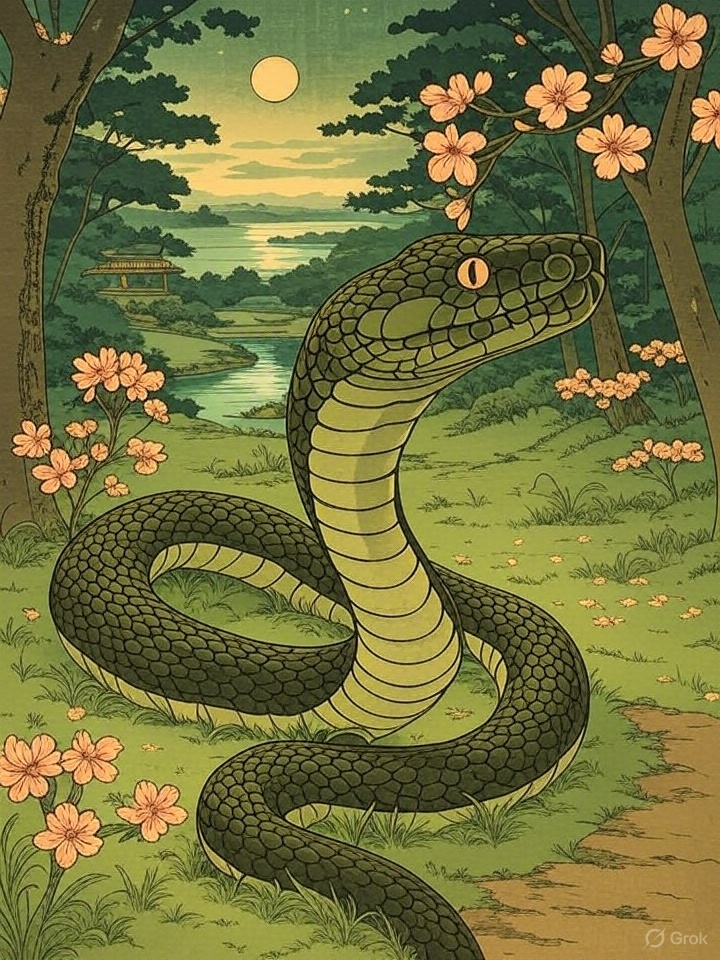Cultural Background
- Unlike mainland Japanese yōkai, Akamataa is part of the Ryukyuan belief system, which includes nature spirits, ancestor worship, and shamanic traditions.
- Akamataa is often paired with another serpent spirit called Kuromataa (the "Black Mataa").
- Together, they are guardians of sacred sites and protectors of spiritual purity.
Appearance
- A large snake, sometimes described with red or fiery eyes, and shimmering scales that may change color.
- Sometimes takes a humanoid form, appearing as a spiritual figure or disguised traveler.
- Said to dwell in caves, forests, or sacred groves, especially near utaki (Okinawan sacred places).
Myth & Behavior
- Revered, not feared: Akamataa is typically worshipped, not treated as a monster.
- Appears in rituals and mythic tales, where it tests people’s honesty or punishes those who disrespect nature.
- In some legends, Akamataa guards treasure or protects villages from evil spirits and disease.
Symbolism
- Purity and Protection: Symbol of divine vigilance and moral judgment.
- Natural power: Embodiment of nature’s mysterious, transformative forces.
- Balance: Represents the duality of chaos and order, often paired with Kuromataa to represent yin-yang-like harmony.
Modern Cultural Role
- Appears in Okinawan oral traditions and folklore performances.
- Sometimes referenced in pop culture as a powerful snake deity or guardian spirit.



